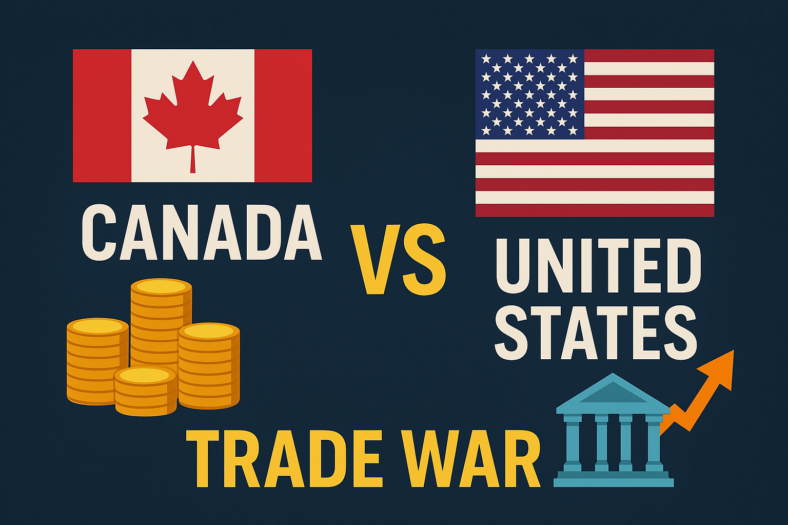In this comprehensive guide, we will explore the landscape of savings accounts in Canada, highlighting the key features, benefits, and considerations to help you identify the best option for your financial circumstances. Whether you’re saving for short-term goals like an emergency fund or long-term objectives such as buying a home or retirement planning, understanding the nuances of savings accounts in Canada will empower you to make sound financial decisions.
We’ll delve into various types of savings accounts offered by Canadian financial institutions, including traditional banks, credit unions, and online banks, examining their interest rates, fees, accessibility, and additional perks. Moreover, we’ll discuss essential factors to consider when comparing savings accounts, such as deposit requirements, withdrawal restrictions, and account management features.
By the end of this guide, you’ll have a comprehensive understanding of the best savings account options available in Canada, enabling you to choose the one that aligns perfectly with your financial goals and preferences. Let’s embark on this journey to optimize your savings and secure your financial future.
Best Savings Accounts in Canada – Editor’s Picks
What are savings accounts and how do they work?
Savings accounts are financial instruments offered by banks, credit unions, and other financial institutions that allow individuals to deposit money and earn interest on their savings. These accounts serve as a safe and convenient way to store funds while providing a modest return on investment through interest accrual.
Here’s a detailed breakdown of how savings accounts work:
Deposit Funds: To open a savings account, you typically need to deposit an initial amount of money, though some accounts may have minimum balance requirements. This initial deposit establishes your account and serves as the foundation for your savings.
Earn Interest: One of the primary benefits of a savings account is the ability to earn interest on your deposited funds. Banks pay interest to savers as a reward for keeping their money in the account. The interest rate, expressed as an annual percentage yield (APY), determines how much interest you’ll earn over time. Generally, the higher the APY, the more interest you’ll accrue on your savings.
Interest Compounding: Savings accounts often employ compound interest, which means that not only do you earn interest on your initial deposit, but you also earn interest on the interest you’ve already earned. This compounding effect allows your savings to grow more rapidly over time, especially if you leave your funds untouched for an extended period.
Accessibility: Unlike some other types of investments, such as certificates of deposit (CDs) or certain retirement accounts, savings accounts typically offer easy access to your funds. You can withdraw money from your savings account whenever you need it, usually through ATM withdrawals, online transfers, or visiting a branch location. However, some savings accounts may have limitations on the number of withdrawals you can make per month without incurring fees or penalties.
Safety: Savings accounts are considered one of the safest places to store your money. Deposits in savings accounts are often insured by government-backed programs, such as the Federal Deposit Insurance Corporation (FDIC) in the United States or the Canada Deposit Insurance Corporation (CDIC) in Canada. These insurance programs protect your deposits up to a certain limit, providing peace of mind against the risk of loss.
Overall, savings accounts offer a simple and secure way to save money while earning interest on your deposits. By regularly contributing to your savings and taking advantage of compounding interest, you can steadily grow your wealth over time and achieve your financial goals.
Pros and cons of savings accounts
Pros:
Safety: Savings accounts are considered one of the safest places to keep your money. Deposits in savings accounts are often insured by government-backed programs, such as the Federal Deposit Insurance Corporation (FDIC) in the United States or the Canada Deposit Insurance Corporation (CDIC) in Canada, which protect your funds up to a certain limit against bank failures.
Liquidity: Savings accounts offer easy access to your money. You can withdraw funds from your savings account whenever you need them, usually through ATM withdrawals, online transfers, or visiting a branch location. This liquidity makes savings accounts suitable for emergency funds or short-term savings goals.
Interest Earnings: While the interest rates on savings accounts may not be as high as some other investment options, such as stocks or mutual funds, they still provide a modest return on your savings. By earning interest on your deposits, your money can grow over time, especially with the compounding effect.
Low Risk: Compared to more volatile investment options like stocks or bonds, savings accounts carry minimal risk. Your principal investment is generally secure, and you’re unlikely to experience significant fluctuations in account value.
Accessibility: Most financial institutions offer online banking services, making it convenient to manage your savings account from anywhere with internet access. You can easily monitor your account balance, track transactions, and set up automatic transfers to boost your savings.
Cons:
Low Interest Rates: One of the main drawbacks of savings accounts is that the interest rates tend to be relatively low, especially in a low-interest-rate environment. While your money is safe and accessible, the returns may not keep pace with inflation, potentially resulting in a loss of purchasing power over time.
Inflation Risk: Savings accounts may not offer sufficient returns to outpace inflation, meaning that the real value of your savings could decrease over time. Inflation erodes the purchasing power of your money, diminishing the effectiveness of saving in a low-yield account.
Fees and Requirements: Some savings accounts may impose fees or require minimum balance requirements to maintain the account. Common fees include monthly maintenance fees, excessive withdrawal fees, or fees for falling below the minimum balance. These costs can eat into your interest earnings and reduce the overall effectiveness of the account.
Limited Growth Potential: While savings accounts provide a safe and stable place to store your money, they may not offer the same growth potential as riskier investment options like stocks or real estate. If your goal is to achieve significant wealth accumulation or long-term financial growth, relying solely on a savings account may not be sufficient.
Opportunity Cost: By allocating all your savings to a low-yield savings account, you may miss out on potential higher returns available through other investment vehicles. Depending on your financial goals and risk tolerance, it may be worth considering diversifying your investments to optimize your overall portfolio growth.
What types of savings accounts are available in Canada
In Canada, there are several types of savings accounts available to consumers, each catering to different financial needs and preferences. Here are some common types of savings accounts offered by Canadian financial institutions:
Basic Savings Accounts: Basic savings accounts are the most straightforward type of savings account. They typically offer a low or no minimum balance requirement and provide basic features such as interest accrual and easy access to funds. These accounts are suitable for individuals looking to establish a simple savings vehicle without any additional frills or requirements.
High-Interest Savings Accounts (HISAs): High-interest savings accounts offer higher interest rates compared to traditional savings accounts. These accounts are designed to help savers maximize their interest earnings while still providing easy access to funds. HISAs often have competitive interest rates that may fluctuate based on market conditions, allowing savers to earn a more substantial return on their deposits.
Tax-Free Savings Accounts (TFSAs): Tax-Free Savings Accounts (TFSAs) are a popular savings option in Canada that allows individuals to save and invest money without paying taxes on the investment gains. Contributions to a TFSA are made with after-tax dollars, but any interest, dividends, or capital gains earned within the account are tax-free. TFSA contribution limits are set by the government and may vary from year to year.
Registered Retirement Savings Plans (RRSPs): While primarily used for retirement savings, Registered Retirement Savings Plans (RRSPs) also function as a type of savings account. Contributions to an RRSP are tax-deductible, and investment gains within the account grow tax-deferred until withdrawal. RRSPs offer a range of investment options, including savings accounts, mutual funds, stocks, and bonds, allowing individuals to tailor their retirement savings strategy to their risk tolerance and financial goals.
Youth Savings Accounts: Many financial institutions offer specialized savings accounts for children and teenagers. These accounts often come with features such as no monthly fees, competitive interest rates, and educational resources to help young savers learn about money management. Youth savings accounts may also include perks like bonus interest or incentives to encourage regular saving habits.
Senior Savings Accounts: Some banks offer savings accounts specifically designed for seniors, providing features such as discounted fees, higher interest rates, and additional benefits tailored to the needs of older adults. These accounts may also offer convenience features like direct deposit of pension payments or easy access to healthcare-related services.
Online Savings Accounts: With the rise of online banking, many financial institutions offer online savings accounts that provide competitive interest rates and convenient digital banking features. Online savings accounts typically have low fees, high-interest rates, and easy account management through web and mobile platforms, making them an attractive option for tech-savvy savers.
These are just a few examples of the types of savings accounts available in Canada. Each type of account may have its own benefits, features, and eligibility requirements, so it’s essential to compare options carefully and choose the account that best aligns with your financial goals and needs.
How to find the best savings accounts in Canada
Finding the best savings account in Canada requires careful consideration of various factors, including interest rates, fees, accessibility, and additional features offered by different financial institutions. Here’s a detailed guide on how to find the best savings account in Canada:
Research Financial Institutions: Start by researching different banks, credit unions, and online financial institutions that offer savings accounts in Canada. Look for reputable institutions with a solid track record of customer service, competitive interest rates, and favorable account terms.
Compare Interest Rates: Interest rates play a significant role in determining the overall returns on your savings account. Compare the interest rates offered by different financial institutions to identify accounts with the highest rates. Keep in mind that interest rates may vary based on account balance tiers or promotional offers, so be sure to review the terms and conditions carefully.
Consider Account Fees: Some savings accounts may charge monthly maintenance fees, transaction fees, or other service charges. Evaluate the fee structures of different accounts and choose one with minimal or no fees, especially if you’re looking to maximize your savings without incurring unnecessary costs.
Review Minimum Balance Requirements: Many savings accounts have minimum balance requirements that must be maintained to avoid fees or qualify for certain benefits. Assess whether the minimum balance requirements align with your financial situation and savings goals. Opt for accounts with reasonable minimum balance requirements or no minimum balance requirements at all, if possible.
Examine Accessibility: Consider the accessibility of the savings account in terms of convenience and ease of use. Evaluate factors such as branch locations, ATM access, online banking capabilities, mobile banking apps, and customer support services. Choose a savings account that offers the accessibility features you need to manage your finances effectively.
Check Account Features: Look for additional features and benefits offered by savings accounts, such as overdraft protection, unlimited transactions, automated savings tools, bonus interest rates, or rewards programs. Assess whether these features align with your financial needs and preferences and add value to the overall savings account package.
Read Reviews and Ratings: Seek out reviews, ratings, and testimonials from other account holders to gain insights into the customer experience and satisfaction levels with different savings accounts. Online review platforms, consumer advocacy websites, and financial forums can provide valuable feedback and recommendations from real users.
Consider Specialized Savings Accounts: Depending on your financial goals and circumstances, you may benefit from specialized savings accounts such as High-Interest Savings Accounts (HISAs), Tax-Free Savings Accounts (TFSAs), or Registered Retirement Savings Plans (RRSPs). Evaluate whether these specialized accounts offer advantages that align with your savings objectives and tax planning strategies.
Review Terms and Conditions: Before opening a savings account, carefully review the account terms and conditions, including interest rates, fees, withdrawal limits, deposit requirements, and any applicable restrictions or penalties. Ensure that you fully understand the terms of the account agreement to avoid any surprises or misunderstandings down the line.
Seek Professional Advice: If you’re unsure about which savings account is best suited to your needs, consider seeking advice from a financial advisor or banking professional. A knowledgeable advisor can help you evaluate your options, assess your financial situation, and make informed decisions that align with your goals and preferences.
By following these steps and conducting thorough research, you can identify the best savings account in Canada that meets your needs, helps you maximize your savings potential, and supports your financial goals effectively.
How to apply for a savings account in Canada
Applying for a savings account in Canada is a straightforward process that can typically be completed online, over the phone, or in person at a bank branch. Here’s a detailed guide on how to apply for a savings account in Canada:
Research Financial Institutions: Start by researching different banks, credit unions, and online financial institutions that offer savings accounts in Canada. Compare their offerings, including interest rates, fees, account features, and customer reviews, to find the best option that meets your needs.
Choose a Savings Account: Once you’ve selected a financial institution, choose the specific savings account that best suits your financial goals and preferences. Consider factors such as interest rates, fees, accessibility, account features, and any special promotions or benefits offered.
Gather Required Documents: Before applying for a savings account, gather the necessary documents and information that may be required for the application process. This typically includes:
- Personal identification (e.g., driver’s license, passport, or government-issued ID)
- Social Insurance Number (SIN) or Taxpayer Identification Number (TIN)
- Proof of address (e.g., utility bill, lease agreement, or government-issued ID with current address)
- Employment information (e.g., employer’s name and contact information, income details)
Choose Application Method: Determine how you want to apply for the savings account. Most financial institutions offer multiple application methods, including:
Online: Many banks and credit unions allow you to apply for a savings account through their website or mobile app. Simply navigate to the “Open an Account” or “Apply Now” section, fill out the online application form, and submit the required documents electronically.
Phone: You can also apply for a savings account over the phone by calling the bank’s customer service or sales department. A representative will guide you through the application process and assist with any questions or concerns you may have.
In Person: If you prefer face-to-face interaction, visit a local bank branch or credit union location to apply for a savings account in person. A banking representative will help you complete the application form, verify your identity, and provide any necessary assistance.
Complete the Application Form: Whether applying online, over the phone, or in person, you’ll need to complete an application form with your personal information, contact details, identification documents, and other relevant details. Provide accurate and up-to-date information to ensure a smooth application process.
Submit Required Documents: Depending on the application method, you may need to submit supporting documents to verify your identity, address, and income. Follow the instructions provided by the financial institution to submit the required documents electronically, by mail, or in person.
Review and Confirm: Before finalizing your application, carefully review all the information you’ve provided to ensure accuracy and completeness. Confirm that you understand the terms and conditions of the savings account, including interest rates, fees, and any applicable policies.
Wait for Approval: Once you’ve submitted your application and supporting documents, wait for the financial institution to review and process your application. The approval process may take anywhere from a few business days to a couple of weeks, depending on the institution and the complexity of your application.
Receive Account Details: Upon approval, you’ll receive confirmation of your new savings account along with account details, such as your account number, routing number (if applicable), and instructions on how to access your account online or through mobile banking.
Fund Your Account: To start using your savings account, deposit funds into the account using one of the available funding methods, such as electronic transfer, wire transfer, check deposit, or in-person deposit at a bank branch.
By following these steps, you can apply for a savings account in Canada efficiently and start saving towards your financial goals with ease. If you have any questions or need assistance during the application process, don’t hesitate to contact the financial institution’s customer service for support.
What are the most common fees and costs for savings accounts in Canada?
Common fees and costs associated with savings accounts in Canada can vary depending on the financial institution and the specific type of savings account. While some accounts may offer no monthly fees or transaction charges, others may have more extensive fee structures. Here are some common fees and costs you may encounter with savings accounts in Canada:
Monthly Maintenance Fee: Many savings accounts may charge a monthly maintenance fee, also known as an account service fee or administration fee. This fee is typically charged to cover the cost of maintaining the account and providing banking services. Some accounts waive the monthly fee if you maintain a minimum balance or meet other eligibility requirements.
Excessive Transaction Fee: Some savings accounts impose limits on the number of transactions you can make per month without incurring additional fees. If you exceed the allowable number of transactions, such as withdrawals, transfers, or bill payments, you may be charged an excessive transaction fee for each additional transaction beyond the limit.
Minimum Balance Fee: Certain savings accounts require you to maintain a minimum balance to avoid monthly maintenance fees or qualify for certain benefits. If your account balance falls below the specified minimum threshold, you may incur a minimum balance fee or lose access to fee waivers and perks associated with the account.
ATM Fees: While many financial institutions offer access to a network of ATMs where you can withdraw cash or check your account balance for free, using ATMs outside of the network may result in ATM fees. These fees can include surcharges imposed by the ATM owner and additional fees charged by your own bank for using out-of-network ATMs.
Overdraft Fees: Some savings accounts may offer overdraft protection, allowing you to withdraw more funds than are available in your account up to a certain limit. However, if you overdraw your account and exceed the overdraft limit, you may incur overdraft fees or insufficient funds fees for each transaction that exceeds your available balance.
Transfer Fees: If you transfer funds between your savings account and another account within the same financial institution or to an external bank, you may encounter transfer fees. These fees can vary depending on the transfer method, such as electronic transfers, wire transfers, or bank drafts.
Foreign Transaction Fees: If you use your savings account for transactions denominated in a foreign currency or conduct transactions outside of Canada, you may be subject to foreign transaction fees. These fees typically apply to purchases made with your debit card or ATM withdrawals in foreign countries.
Paper Statement Fees: While many financial institutions offer electronic statements as a cost-effective and environmentally friendly option, requesting paper statements may incur additional fees. Consider opting for electronic statements to avoid paper statement fees and access your account statements conveniently online.
Account Closure Fee: If you decide to close your savings account, some financial institutions may charge an account closure fee. This fee may apply if you close the account within a certain timeframe after opening it or if you close the account before fulfilling certain conditions specified in the account agreement.
It’s essential to review the fee schedule and terms and conditions associated with any savings account you’re considering to understand the potential costs involved. Compare accounts from different financial institutions to find one with fee structures that align with your banking habits and financial preferences. Additionally, look for accounts that offer fee waivers, discounts, or rewards programs to minimize the impact of fees on your savings.
Are savings accounts taxable in Canada?
In Canada, interest earned on savings accounts is generally taxable. The Canada Revenue Agency (CRA) considers interest income from savings accounts, along with other forms of investment income, as taxable income that must be reported on your annual tax return.
Here’s how the taxation of savings account interest works in Canada:
Taxable Interest Income: Any interest earned on funds held in a savings account is considered taxable income. This includes interest earned on traditional savings accounts, high-interest savings accounts, tax-free savings accounts (TFSAs), and other types of interest-bearing accounts.
Tax Reporting: Financial institutions are required to provide you with a T5 Statement of Investment Income at the end of each tax year, summarizing the interest income earned on your savings accounts and other investments. You must report this income on your personal income tax return using the appropriate forms and schedules.
Taxation Rates: The amount of tax you’ll pay on your savings account interest income depends on your total taxable income for the year and your applicable tax bracket. Interest income is taxed at your marginal tax rate, which may vary depending on your income level and the province or territory in which you reside.
Tax-Free Savings Accounts (TFSAs): While interest earned on savings accounts held within a TFSA is taxable, the unique benefit of TFSAs is that any investment income, including interest, dividends, and capital gains, earned within the account is tax-free. Contributions to a TFSA are made with after-tax dollars, and withdrawals from the account are also tax-free, making TFSAs an effective tax planning tool for saving and investing.
Tax Deductibility of Investment Expenses: Some investment-related expenses, such as account maintenance fees or investment advisory fees, may be deductible for tax purposes. However, it’s essential to consult with a tax professional or financial advisor to determine the eligibility of specific deductions and ensure compliance with tax laws.
Reporting Foreign Interest Income: If you have savings accounts or investments held outside of Canada that generate interest income, you’re required to report this foreign interest income on your Canadian tax return. Be sure to accurately report all worldwide income to avoid penalties for non-compliance with tax reporting requirements.
Overall, while savings account interest is taxable in Canada, tax-efficient strategies such as investing in TFSAs or taking advantage of eligible deductions can help minimize the impact of taxes on your investment income. It’s advisable to consult with a tax professional or financial advisor to understand your tax obligations and explore opportunities for tax optimization based on your individual financial situation.
Chequing accounts vs savings accounts
Chequing accounts and savings accounts are both common banking products that serve different purposes and offer distinct features and benefits. Here’s a detailed comparison between chequing accounts and savings accounts:
Chequing Accounts:
Purpose: Chequing accounts are primarily used for everyday transactions and managing day-to-day expenses. These accounts are designed for frequent deposits, withdrawals, and payments, making them ideal for handling routine financial transactions such as paying bills, making purchases, and accessing cash.
Accessibility: Chequing accounts offer easy access to funds through various channels, including debit cards, checks (cheques), online banking, ATMs, and branch locations. They provide flexibility and convenience for managing your money and conducting transactions whenever and wherever you need.
No Interest or Low Interest: While some chequing accounts may offer minimal interest on balances, the interest rates are typically lower compared to savings accounts. Chequing accounts are not primarily intended for saving or investing, so interest earnings are often minimal or negligible.
No Transaction Limits: Chequing accounts typically have no restrictions on the number of transactions you can make, allowing for unlimited deposits, withdrawals, transfers, and payments. This flexibility makes chequing accounts suitable for individuals with frequent banking needs and variable cash flow.
Overdraft Protection: Many chequing accounts offer overdraft protection, allowing you to overdraw your account up to a certain limit to cover transactions when your balance is insufficient. Overdraft protection helps prevent declined transactions and NSF (non-sufficient funds) fees but may incur overdraft fees or interest charges.
Savings Accounts:
Purpose: Savings accounts are designed for accumulating and storing funds for future financial goals, emergencies, or planned expenses. These accounts help you save money over time by earning interest on your deposits, making them suitable for building an emergency fund, saving for a specific purpose, or earning a return on idle cash.
Interest Earnings: Savings accounts offer higher interest rates compared to chequing accounts, allowing your money to grow over time through interest accrual. While interest rates may vary depending on the account type and financial institution, savings accounts typically provide a modest return on your savings.
Limited Access: Savings accounts may have restrictions on the number of withdrawals or transfers you can make per month without incurring fees or penalties. These limitations encourage you to maintain a balance and avoid frequent withdrawals, promoting disciplined saving habits and long-term wealth accumulation.
Emergency Fund: Savings accounts are commonly used to build an emergency fund, providing a financial safety net for unexpected expenses or income disruptions. The liquidity and stability of savings accounts make them an ideal vehicle for storing funds that may be needed at short notice.
Tax-Advantaged Options: Specialized savings accounts, such as Tax-Free Savings Accounts (TFSAs) or Registered Retirement Savings Plans (RRSPs), offer tax advantages such as tax-free growth or tax-deferred earnings, making them valuable tools for saving and investing for specific financial goals or retirement.
In summary, while both chequing accounts and savings accounts are essential components of personal banking, they serve different purposes and cater to distinct financial needs. Chequing accounts provide easy access to funds for daily transactions, while savings accounts offer higher interest rates and help you grow your savings over time. Depending on your financial goals and lifestyle, you may choose to maintain both types of accounts to effectively manage your finances and achieve your objectives.
Alternatives to savings accounts
There are several alternatives to savings accounts available to individuals looking to grow their money or manage their finances in different ways. Here are some common alternatives to traditional savings accounts:
High-Interest Savings Accounts (HISAs): High-interest savings accounts offer higher interest rates compared to standard savings accounts, allowing savers to earn a more substantial return on their deposits. HISAs are typically offered by online banks or financial institutions and may require higher initial deposits or minimum balances to qualify for the competitive interest rates.
Tax-Free Savings Accounts (TFSAs): Tax-Free Savings Accounts (TFSAs) are a popular investment option in Canada that allows individuals to save and invest money without paying taxes on the investment gains. Contributions to a TFSA are made with after-tax dollars, and any interest, dividends, or capital gains earned within the account are tax-free. TFSAs offer flexibility in investment choices, including savings accounts, mutual funds, stocks, and bonds, making them valuable tools for long-term saving and investing.
Certificate of Deposit (CDs): Certificates of Deposit (CDs), also known as term deposits, are fixed-term savings products offered by banks and credit unions. CDs typically offer higher interest rates than standard savings accounts in exchange for locking in your money for a specific period, ranging from a few months to several years. Early withdrawal from a CD may incur penalties, so CDs are best suited for individuals with stable financial situations and long-term savings goals.
Money Market Accounts: Money market accounts are interest-bearing deposit accounts that typically offer higher interest rates than regular savings accounts while providing some of the liquidity and accessibility features of checking accounts. Money market accounts may require higher minimum balances and may have limitations on the number of transactions or withdrawals allowed per month.
High-Yield Checking Accounts: High-yield checking accounts, also known as rewards checking accounts, offer competitive interest rates and additional perks such as cashback rewards, ATM fee reimbursements, or other incentives for meeting certain account requirements, such as minimum monthly deposits or debit card transactions. High-yield checking accounts combine the features of both checking and savings accounts, providing the opportunity to earn interest on your checking balance while enjoying convenient access to funds.
Investment Accounts: For individuals seeking higher returns and willing to take on some level of risk, investment accounts such as brokerage accounts or retirement accounts (e.g., Registered Retirement Savings Plans, or RRSPs) offer opportunities to invest in a diversified portfolio of stocks, bonds, mutual funds, ETFs, and other securities. While investment accounts carry the risk of market fluctuations and potential losses, they also offer the potential for higher long-term returns compared to traditional savings accounts.
Robo-Advisors: Robo-advisors are online investment platforms that use algorithms and automation to provide personalized investment advice and manage portfolios on behalf of investors. Robo-advisors offer a hands-off approach to investing, typically with lower fees than traditional financial advisors, making them accessible to a wide range of investors with varying levels of investment knowledge and experience.
These are just a few alternatives to traditional savings accounts available to individuals looking to optimize their savings, earn higher returns, or explore different investment options. It’s essential to evaluate the features, risks, and potential returns of each alternative based on your financial goals, risk tolerance, and investment horizon to make informed decisions that align with your needs and preferences.
FAQs about the best savings accounts in Canada
A high-interest savings account (HISA) is a type of savings account that offers a higher interest rate compared to traditional savings accounts. HISAs typically provide competitive interest rates to help savers maximize their earnings on deposited funds. These accounts work similarly to regular savings accounts, allowing individuals to deposit money, earn interest on their balances, and access funds as needed.
When comparing savings accounts in Canada, it’s essential to consider factors such as interest rates, fees, account features, accessibility, and customer service. Look for accounts with competitive interest rates, minimal fees, convenient access to funds through online banking or ATMs, and excellent customer support to maximize the benefits of your savings account.
While some savings accounts may have minimal or no monthly fees, others may charge fees for specific services or transactions, such as monthly maintenance fees, excessive transaction fees, or ATM withdrawal fees. It’s essential to review the fee schedule and terms and conditions of the savings account to understand any potential costs involved and choose an account with fee structures that align with your banking habits and financial preferences.
A regular savings account is a standard deposit account offered by banks and financial institutions that allows individuals to save money and earn interest on their deposits. In contrast, a tax-free savings account (TFSA) is a specialized investment account that allows individuals to save and invest money without paying taxes on the investment gains. TFSA contributions are made with after-tax dollars, and any interest, dividends, or capital gains earned within the account are tax-free.
Opening a savings account in Canada is a straightforward process that can typically be done online, over the phone, or in person at a bank branch. To open a savings account, you’ll need to provide personal identification (e.g., driver’s license or passport), proof of address (e.g., utility bill or lease agreement), and your Social Insurance Number (SIN) or Taxpayer Identification Number (TIN). Some financial institutions may require additional documentation or information, so it’s essential to check the specific requirements of the account provider.
Yes, you can have more than one savings account in Canada. Many individuals choose to maintain multiple savings accounts for different financial goals or purposes, such as an emergency fund, a vacation fund, or a down payment fund. Having multiple savings accounts allows you to organize your savings and track progress towards specific objectives effectively.
Yes, savings accounts in Canada are typically insured by the Canada Deposit Insurance Corporation (CDIC) or provincial deposit insurance programs, which protect eligible deposits in the event of a bank failure. CDIC coverage protects eligible deposits up to $100,000 per depositor, per insured category, per member institution. It’s essential to verify that your savings account is eligible for deposit insurance coverage and understand the terms and limits of the insurance program.
To maximize the benefits of a savings account in Canada, consider the following tips:
- Compare interest rates and fees to find the best savings account for your needs.
- Set up automatic transfers to regularly contribute to your savings account.
- Take advantage of special promotions or bonus interest rates offered by financial institutions.
- Monitor your account regularly and review your savings goals to stay on track.
- Consider diversifying your savings with other investment options, such as TFSAs or RRSPs, to optimize your overall financial strategy.
In conclusion, savings accounts play a crucial role in personal finance management for individuals in Canada. Whether you’re saving for short-term goals, building an emergency fund, or planning for the future, finding the right savings account is essential for maximizing your savings potential and achieving your financial objectives.
In Canada, there is a wide range of savings account options available, each with its own features, benefits, and considerations. From traditional savings accounts to high-interest savings accounts, tax-free savings accounts (TFSAs), and specialized investment accounts, there are options to suit every saver’s needs and preferences.
When comparing savings accounts in Canada, it’s essential to consider factors such as interest rates, fees, account features, accessibility, and deposit insurance coverage. By conducting thorough research, comparing account options, and understanding the terms and conditions of each account, you can choose a savings account that aligns with your financial goals and helps you grow your savings over time.
Additionally, it’s essential to regularly review your savings strategy, adjust your savings goals as needed, and explore opportunities to optimize your savings and investment portfolio. Whether you’re saving for a rainy day, a major purchase, or retirement, a well-managed savings account can serve as a valuable tool for building financial security and achieving long-term prosperity.
By making informed decisions, staying disciplined in your saving habits, and leveraging the benefits of savings accounts and other financial tools available in Canada, you can take control of your financial future and work towards realizing your dreams and aspirations.




















